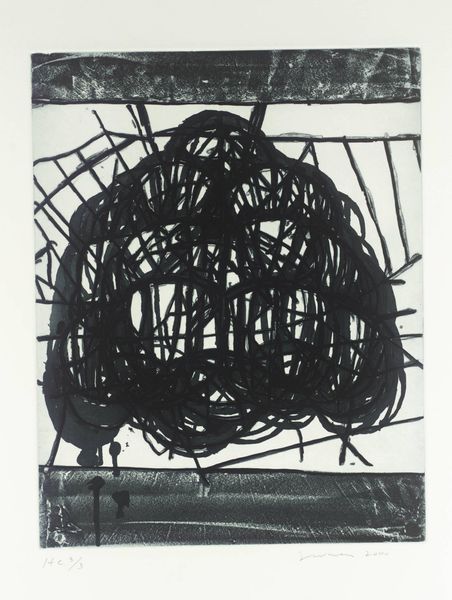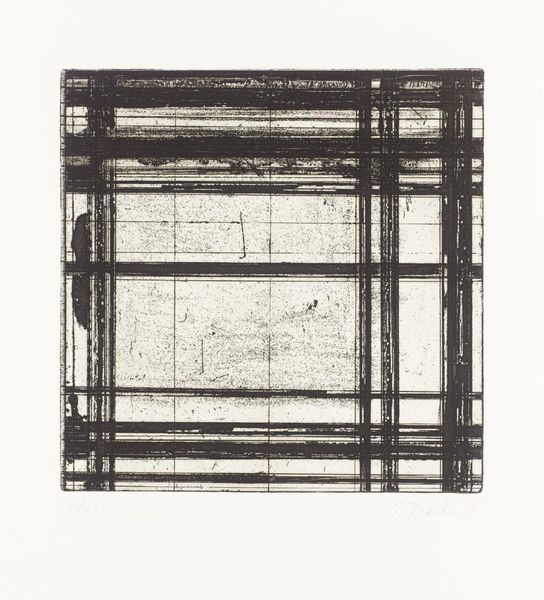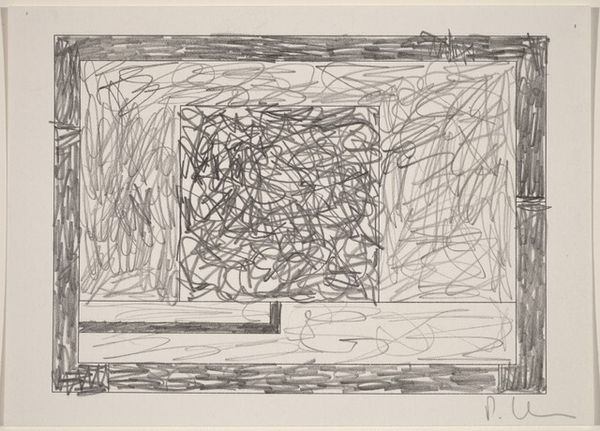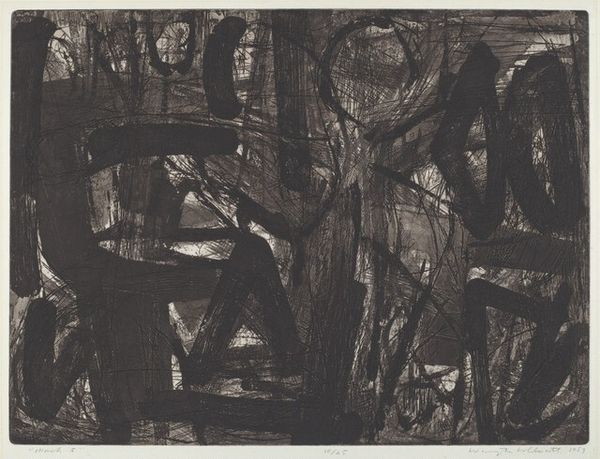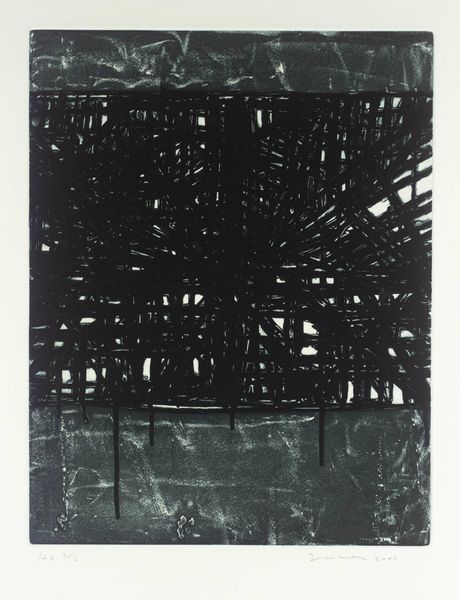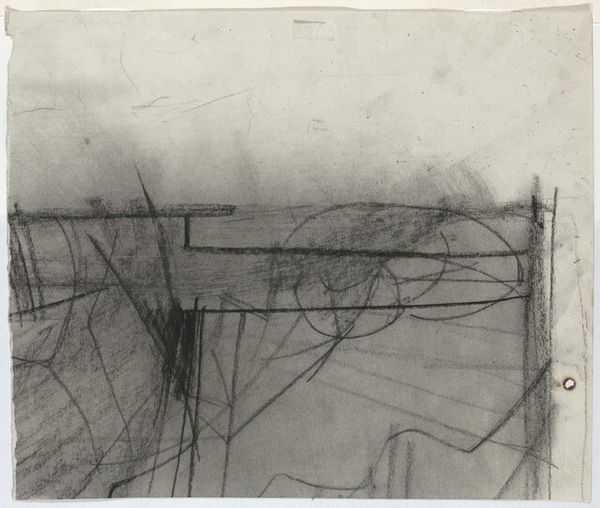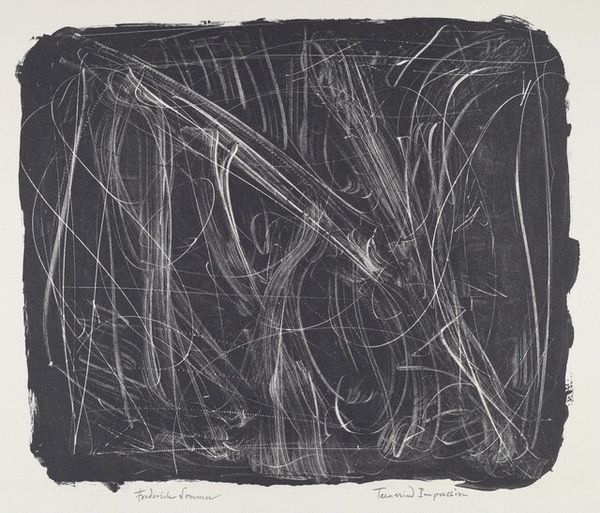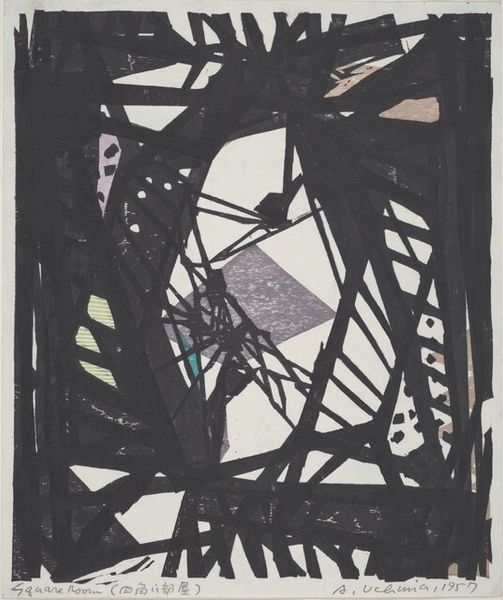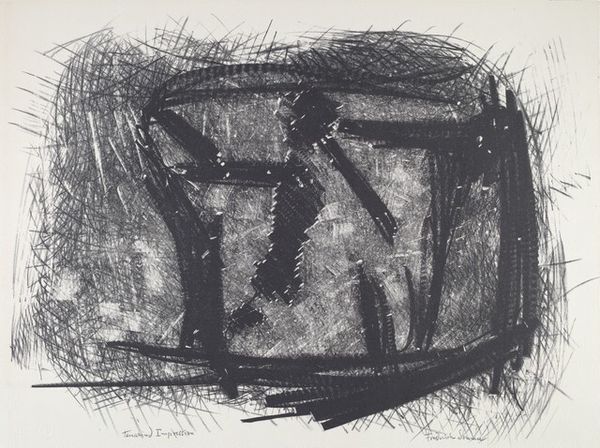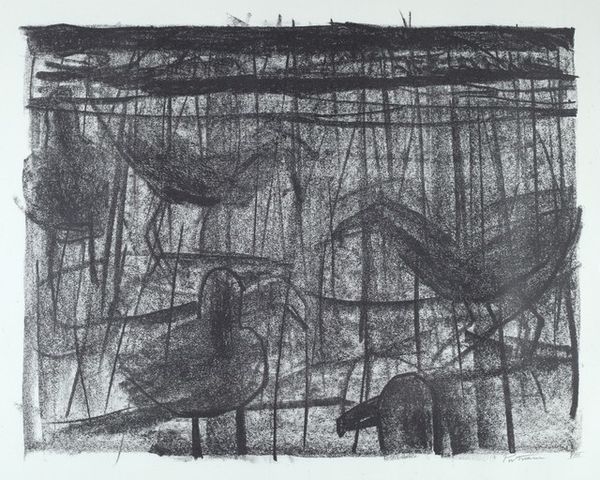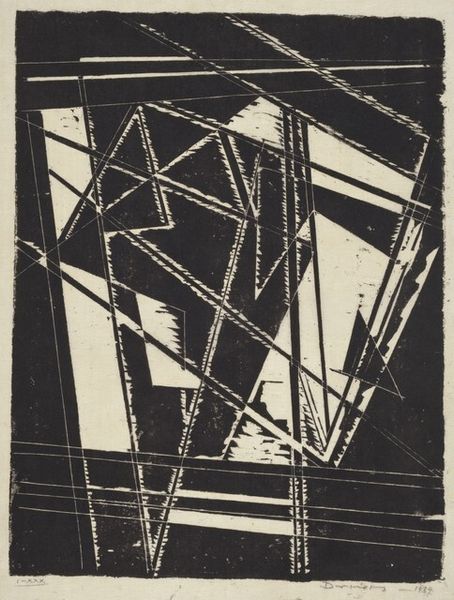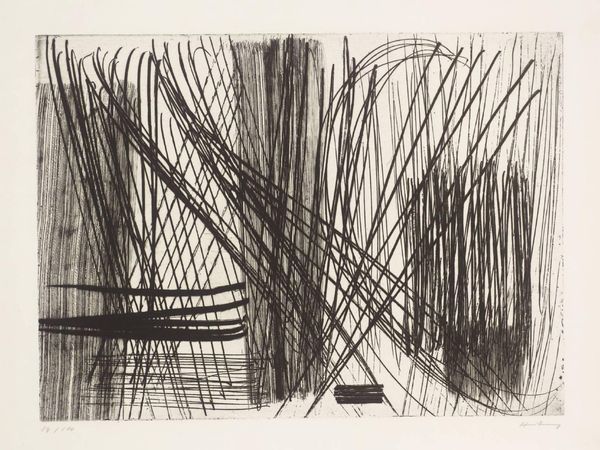
print, etching
# print
#
etching
#
etching
#
geometric
#
line
#
cityscape
#
realism
Dimensions: plate: 20 × 39.5 cm (7 7/8 × 15 9/16 in.) sheet: 27.5 × 48 cm (10 13/16 × 18 7/8 in.)
Copyright: National Gallery of Art: CC0 1.0
Curator: We are looking at Armin Landeck's "Subway Station, 14th Street," an etching dating from 1951. Editor: It's a study in urban anxiety. The stark lines and dense crosshatching almost suffocate the space. There's a feeling of being trapped, overwhelmed by the geometry of the city. Curator: Interesting observation, I can see that in relation to the context of post-war alienation, and how urban environments are portrayed as sites of anonymity and dehumanization. Mass transit, despite connecting us, can also make us feel intensely isolated. Editor: Exactly. And the artist's use of line – they converge and diverge, creating an almost dizzying effect. Semiotically, these lines point everywhere and nowhere. There is very little variation. It suggests movement but also entrapment. Curator: Also, note the seemingly mundane subject, rendered through the artistic interpretation to provoke such visceral reactions. There’s a distinct choice to depict the urban infrastructure, typically taken for granted. In terms of broader socio-political narratives, how is the individual affected by these systems? Editor: I'm intrigued by how Landeck achieves such a strong tonal range using only line. It almost verges on abstraction but remains firmly rooted in recognizable reality. A beautiful example of how purely formal decisions can impact the overall emotional register. Curator: Precisely, but it goes deeper. Landeck uses the mundane to invite viewers to look at the social implications. Are the working classes, those that commute, the targets, or are we to empathize? Is there dignity and worth even in those spaces and commutes that would usually strip humans of it? Editor: The artist's manipulation of line truly challenges our perception. It invites deeper analysis through artistic approach alone. The medium emphasizes form rather than representation. Curator: Which goes back to reflecting the zeitgeist; it becomes an insightful record of its period. Thank you for offering such thoughtful comments, Editor. Editor: It's been a pleasure, curator.
Comments
No comments
Be the first to comment and join the conversation on the ultimate creative platform.
